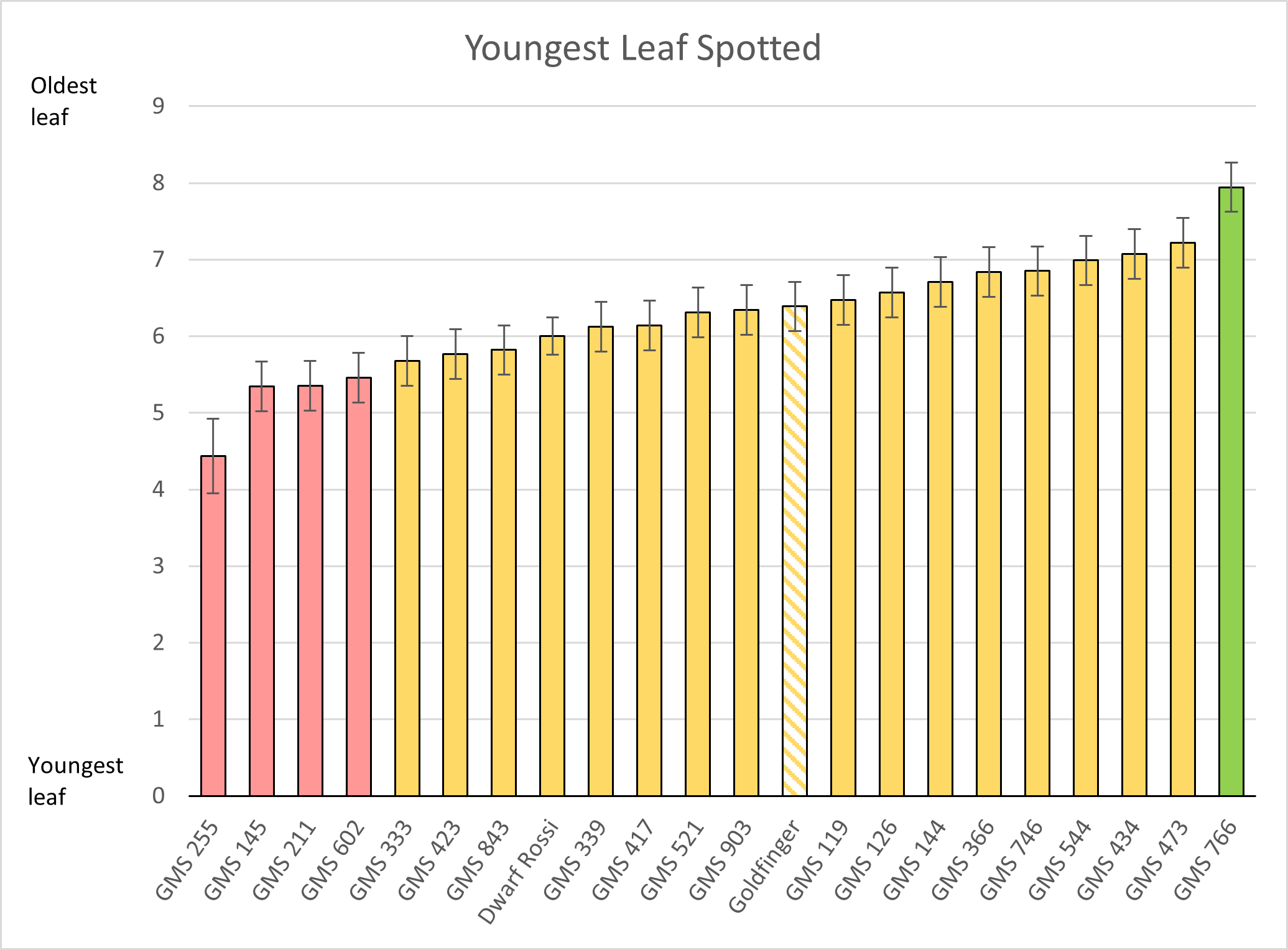Yellow Sigatoka screening - Goldfinger mutagenesis trial
Katie Robertson, Jeff Daniells, David East and Carole Wright, Queensland DAF (Dec 2023)
The screening trial assessing Goldfinger mutant selections’ resistance or susceptibility to the fungal leaf disease, yellow Sigatoka is now complete. Most of the selections had a similar reaction to yellow Sigatoka as the Goldfinger control, however GMS 766 was significantly more resistant, while four others were significantly more susceptible. This latter result demonstrates that mutagenesis can significantly change a plant’s level of yellow Sigatoka resistance.
An estimated $25-30 million per year is spent on controlling yellow Sigatoka leaf spot (Pseudocercospora musae) Identifying varieties with better resistance to the disease, provided they were otherwise commercially viable, would be of great benefit to the industry by reducing input costs and reliance on fungicides.
Over the 2023 wet season, a yellow Sigatoka screening trial was conducted at the South Johnstone Research Facility on the top-twenty Goldfinger selections which had been developed through DAF’s mutagenesis project.
The block had been nurse suckered to standardise plant development stage. Leaf disease control ceased a few months prior to nurse suckering to build up inoculum levels and ensure adequate disease pressure. Plants were assessed for severity of leaf spot disease on 3 occasions, at monthly intervals leading up to bunching. The assessment consisted of determining the Youngest Leaf Spotted (10 or more mature necrotic lesions (YLS), and the Youngest Leaf with greater than 33% of the leaf lamina destroyed by disease (YL33). The Total number of Functional Leaves (TFL) was recorded if the disease was not present or had not progressed to the >33% necrosis severity level. For the purposes of this article, only the YLS and TFL data will be discussed.
While Goldfinger has resistance to black Sigatoka, this is not the case for yellow Sigatoka, to which it is better described as having an intermediate reaction. Of particular interest was how the new selections compared to Goldfinger and the possible effect mutagenesis may have had on the plants ’ reaction to this disease. Figure 1 below shows the average YLS of Goldfinger was 6.4, which was similar to fifteen of the twenty mutant selections. ‘GMS 766’ was the only selection that demonstrated better resistance to leaf spot than Goldfinger, having an average YLS of 7.9.
On the other end of the spectrum, ‘GMS 602’, ‘GMS 211’, ‘GMS 145’, and ‘GMS 255’ had average YLS values of between 5.4 and 4.4, demonstrating they were significantly more susceptible to the disease. Although not the original objective of the project, these results demonstrate mutagenesis can significantly change a plant’s level of yellow Sigatoka resistance. The dwarf Lady Finger selection ‘Dwarf Rossi’ was planted as a single guard plant at the beginning of each row of Goldfinger.
The level of disease was comparable to the ‘Dwarf Rossi’ plants in the variety evaluation, allowing comparisons to be made between the two trials. It was not significantly different to Goldfinger in its reaction to yellow Sigatoka.

This research has been funded as part of the project Improved Plant Protection for the Banana Industry (BA16001), which is funded by Hort Innovation, using the banana research and development levy, co-investment from the Department of Agriculture and Fisheries and contributions from the Australian Government. Hort Innovation is the grower-owned, not-for-profit research and development corporation for Australian horticulture.


